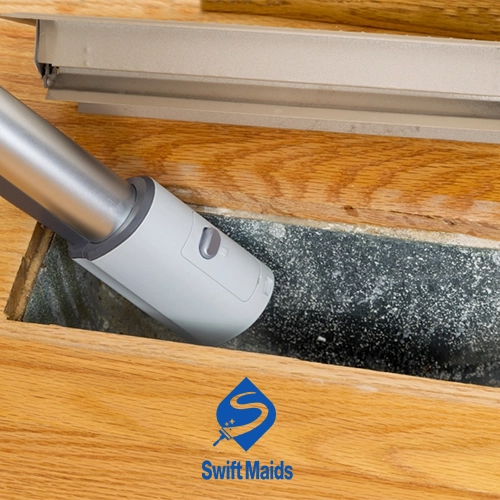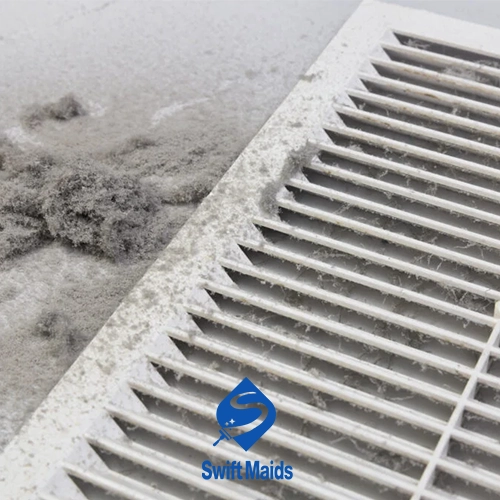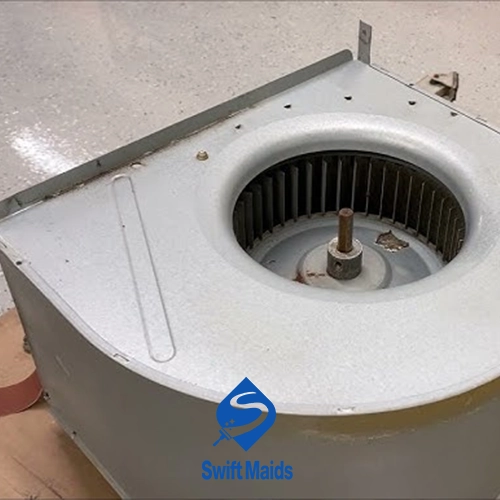A furnace that’s not working properly can make your home uncomfortable during the winter. Even the best furnaces can lose their efficiency over time if they’re not cleaned regularly. Dust, debris, and airborne contaminants can build up in the furnace and make it work harder while providing less heat. Along with replacing air filters regularly, an annual furnace cleaning helps remove built-up gunk and ensure optimal operation.
With a few simple maintenance steps, homeowners can safely clean key furnace components and avoid expensive HVAC cleaning bills. This blog post will show you how to clean a furnace and recommend techniques for accessing and cleaning the interior blower, burners, flame sensor, and air filter. While professional deep cleaning Clagry is still ideal now and then, keeping up with these tasks allows homeowners to clear away dust and debris that hamper proper furnace function.
Safety Tips for How to Clean a Furnace
Before you start cleaning any furnace or HVAC system, it’s important to take the right safety precautions.
Turn Off the Electrical Power to the Unit
The power must be turned off at the breaker before opening or accessing the furnace. Lock-out and tag-out procedures must be followed to prevent accidental starting. In addition, please ensure that the gas valves are also shut off when cleaning the burners.
Let System Cool
If the furnace has been in use, please allow sufficient time for all components and metal surfaces to cool fully before handling to prevent burns.
Use Protective Gear
When cleaning the furnace interior, it’s a good idea to wear gloves, long sleeves, closed-toe shoes, and safety goggles. You might also want to wear a particle mask to avoid inhaling loose debris particles.
Maintain Adequate Ventilation
When using compressed air or cleaning solutions, make sure to open windows and doors to ensure proper airflow and prevent fumes or chemicals from building up.
Have an Extinguisher on Hand
It’s probably not necessary, but it’s a good idea to keep a fire extinguisher handy just in case some debris catches fire while you’re cleaning. Taking it slow is the best way to keep homeowners and their heating equipment safe during furnace maintenance. It’s important to remember that you should never bypass safety or attempt to access internal components with the power still live.
Steps for Cleaning the Furnace Blower
One of the most important things to know about how to clean a furnace is that you need to take care of the blower motor fan. This fan is what circulates the heated air into the ductwork. When the power’s off, just follow these steps:
Accessing the Blower Cabinet
The blower compartment is usually located near the bottom or side of the furnace. You can usually get to the blower compartment by removing a small panel or panels that are secured with screws. Check the manual for your specific unit’s layout.
Using a Vacuum
Once you’re inside, use a vacuum hose with a narrow crevice attachment to gently remove any dust, lint, or debris that might be built up in the blower cabinet and intake vents. Just a heads-up: avoid scratching the blower.
Wiping the Blades
Use either isopropyl alcohol on a cloth or a mild soap and water solution to gently wipe each fan blade clean. Spin the blades manually to expose all sides for cleaning.
Clearing Ductwork
Use a vacuum and pipe cleaners to clear out any debris that might be blocking the intake or output ducts connected to the blower unit. Another thing you can try is compressed air to dislodge deposits.
Replacing Covers
Once cleaning is complete, replace any panels or vents removed to access the blower compartment. Restore power once reassembled.
Cleaning Burners for Optimal Combustion
Failure to clean furnace burners routinely can lead to decreased efficiency and heat output as debris collects. Here are tips for safely cleaning burners:
Brushing Loose Particles Away
Use a soft brush attachment on a vacuum to gently remove any surface dust or dirt buildup on the burners. Avoid bending or damaging thin burner components.
Releasing and Removing Burners
Detach any gas or fuel lines leading into the burners, making note of proper reconnection. Remove any securing screws before pulling burners out for access.
Scrubbing With Wire Brush or Emery Cloth
Gently wipe each burner clean using a wire brush, emery cloth, or sandpaper to remove stubborn deposits or corrosion. Avoid applying too much pressure.
Rinsing and Drying Fully
If needed, rinse burners with clean water then be sure components are completely dry before reinstalling to prevent issues with ignition or rusting.
Reattaching Burners
Carefully reconnect any gas lines or fasteners as directed in unit manuals once the clean burners are fully dry. Confirm fittings are snug. Proper burner maintenance helps ensure efficient, complete fuel combustion and maximum heat production.
Keeping the Flame Sensor Clean
The flame sensor is a thin rod within the burner assembly which ensures the presence of a flame for safety before gas continues flowing. As it becomes coated in grime, the flame sensor can malfunction. Cleaning it prevents shutdowns.
Locating the Thin Sensor Rod
The flame sensor is positioned within the burner unit. Consult manuals to identify the specific location in your furnace make and model.
Gently Removing Debris
Use a soft cloth, cotton swab, or pipe cleaner moistened with water or rubbing alcohol to gently wipe debris off the sensor rod. Take great care not to bend the components.
Confirming Connections
Ensure any wiring or connections to the flame sensor rod are still properly attached and tightened after cleaning the contacts. With the critical flame sensor restored to clean working order, the furnace can continue providing consistent comfortable heat all season long.
Replacing Air Filters Frequently
Another tip for how to clean a furnace is replacing air filters. Air filters stop dust and allergens from clogging furnace machinery but get dirty themselves in the process. Replacing filters prevents these accumulations from cycling back into living spaces.
Accessing the Filter
You’ll usually find the panel covers for the filter compartment near the ductwork and the blower. You might also find an access door on the outside of the furnace.
Sliding Out the Old Filter
Grasp the filter carefully and slide it out from its runners or housing, being careful not to rip or damage it in removal.
Inserting a Fresh Filter
Insert a new filter of the same dimensions, with the arrows pointing in the direction of airflow as indicated on the frame. Avoid bending or cramming the filter.
Resetting Indicator Light
If your furnace is set up to do this, you can restart the countdown tracking system and indicator light by pushing the filter reset button or turning the dial. It’s a good idea to replace furnace filters every 1-3 months, as recommended by the manufacturer, to keep the air quality good and the furnace in good shape.
Conclusion
We answered how to clean a furnace in this blog post. From replacing the air filters regularly to cleaning the blower components, burners, and sensors once a year, keeping up with furnace maintenance will keep your heating system running safely and efficiently all season long.
While you should leave complex repairs to the pros, cleaning your furnace is something you can do yourself with just a few simple tools and a few basic precautions and also you can use the experts If you are facing a challenge in cleaning your furnace, you can always use experts of duct and furnace cleaning Calgary. Here at Swift Maids, we take pride in providing these services as quickly as possible and with the highest quality of service.
By regularly cleaning out any debris that might be blocking the airflow or affecting combustion, you can keep your furnace in top shape and running like new. Take a weekend each year to give your furnace some TLC, and you’ll see the benefits in enhanced indoor comfort, lower energy bills, and fewer repairs down the road.




